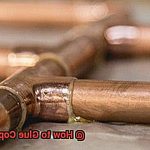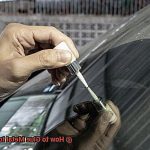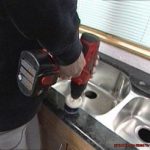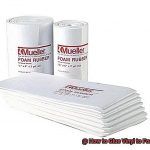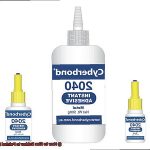Are you looking for a way to connect two pieces of fiberglass?
Glueing fiberglass to fiberglass is an important process that requires special equipment and techniques. In this blog post, I’ll take you through every step needed for a successful glue job, from prepping the surfaces to choosing the right adhesive.
Plus, I’ll provide some helpful tips and tricks to make your project faster and ensure your bond is strong and long-lasting. It’s essential to understand why gluing two pieces of fiberglass together is so critical.
Fiberglass is an incredibly durable and versatile material that can be used in many applications, such as boat hulls or shower stalls. But it must be properly attached if it’s going to function at its best – otherwise, it can easily separate or become damaged over time.
So using the right kind of glue is essential for creating a strong bond between two pieces of fiberglass that will last. I’m here to help you do just that.
In this blog post, I’ll walk you through all the steps involved in gluing fiberglass together successfully – from preparing the surfaces to selecting the right adhesive for your needs. Plus, I’ll give you some useful advice along the way so your project runs smoothly and your bond is secure and long-lasting.
So if you want to know how to glue fiberglass properly, then read on.
Different Types of Glues for Gluing Fiberglass
Contents
- 1 Different Types of Glues for Gluing Fiberglass
- 2 Advantages of Using Epoxy to Glue Fiberglass
- 3 How to Prepare the Surfaces for Gluing
- 4 Step-by-Step Instructions for Gluing with Epoxy
- 5 Tips for Working with Contact Cement
- 6 Alternatives to Glue when Bonding Fiberglass
- 7 Common Mistakes to Avoid When Gluing Fiberglass
- 8 Troubleshooting Tips for Unsuccessful Bondings
- 9 Conclusion
When gluing fiberglass to fiberglass, it is essential to use the right type of glue to ensure a secure and long-lasting bond.
Epoxy glue, polyester resin, cyanoacrylate glue, and Gorilla Glue are all suitable for this purpose, but each has its own unique benefits and drawbacks. Epoxy glue is the most popular choice for bonding fiberglass as it provides an incredibly strong bond that is both waterproof and heat resistant.
It also dries clear, making it ideal for projects where appearance is important. The only downside is that epoxy takes a while to cure – usually within a few hours or overnight.
Polyester resin is another option that can be used for gluing fiberglass. It’s easy to apply and dries quickly, however it may not be as strong as epoxy glue.
Gorilla Glue can create a strong bond too, though it won’t be as durable as epoxy or polyester resin.
Advantages of Using Epoxy to Glue Fiberglass
Epoxy glue is the go-to choice for bonding fiberglass components.
It’s a two-part adhesive system that, when mixed, creates a thick paste-like substance that can be applied to both porous and non-porous surfaces. This makes it perfect for repairing damaged fiberglass or joining two surfaces that are not completely flush.
The primary advantage of using epoxy glue is its incredible bonding strength. Once set, it creates a bond so strong that it can often be difficult to separate two pieces of fiberglass.
This makes it an ideal choice for high-stress areas, such as the hull of a boat or the frame of a fiberglass structure. In addition to its superior bonding strength, epoxy glue also has some unique characteristics that make it particularly well suited for certain applications.
Plus, its long working time allows for plenty of time to adjust and position the pieces before the adhesive sets.
How to Prepare the Surfaces for Gluing
Creating a strong bond between two pieces of fiberglass requires careful surface preparation. Without proper preparation, the glue may not adhere well and the bond could fail over time. Follow these steps to ensure your project is built to last.
Begin by cleaning the surfaces with a degreaser or rubbing alcohol. This step is essential as any residue left behind could interfere with the adhesion process. Use a clean cloth and make sure all dirt, dust, or grease is removed completely.
Next, roughen up the surfaces using sandpaper or a sanding wheel. This increases the surface area for the glue to bond to, like giving your project an extra scrub. Sand until the surfaces are slightly rough but be careful not to overdo it as this could weaken the structure of the fiberglass.
After roughening, apply a primer to both surfaces. Primers improve adhesion by providing a base coat for the glue to adhere to. Use a primer that is specifically designed for use with fiberglass materials for best results and follow manufacturer’s instructions when applying it.
Finally, choose an appropriate glue for bonding fiberglass together and apply it as directed on its packaging. Different types of glues work better on certain materials, so make sure you choose one that is specifically intended for use with fiberglass surfaces.
Preparing surfaces properly before gluing is necessary for creating a strong and durable bond between two pieces of fiberglass that will last through time and wear-and-tear.
Step-by-Step Instructions for Gluing with Epoxy
For a strong and durable bond that can withstand moisture, heat, and chemicals, epoxy is the go-to adhesive for gluing fiberglass to fiberglass.
To achieve the most successful results, follow these step-by-step instructions.
- First, make sure both surfaces are clean and free of debris, grease, or oil.
- Use a degreaser or rubbing alcohol to get rid of any sand or grime.
- Then mix the epoxy according to the package’s instructions; this usually involves combining equal amounts of resin and hardener into a clean container.
- Once you have a thick paste ready to use, apply it with a brush or spatula to one of the surfaces in a thin layer.
- Carefully align the two surfaces and join them together; apply pressure evenly along the entire length of the joint for a good bond.
- If applicable, use clamps to hold the joint together while the epoxy cures (following manufacturer’s instructions for curing time and temperature).
- After it has cured, smooth out any rough edges or surfaces with sandpaper.
You can also paint over it if desired. Epoxy is an excellent choice for bonding fiberglass surfaces together but there are other options available as well such as contact cement which must be applied to both surfaces before pressing them together when dry.
Whichever brand of glue you choose, make sure it’s safe for use with fiberglass and follow all manufacturer instructions closely for best results.
Tips for Working with Contact Cement
Contact cement is an ideal choice, but it requires careful handling to achieve the best results. Here are some tips for working with contact cement:
Ventilation
Contact cement emits strong fumes that can cause dizziness or nausea. Always work in a well-ventilated area or use personal protective equipment like a respirator mask.
Preparation
Before applying the contact cement, make sure that both surfaces are clean, dry and free from any debris, oils or dirt. Use a clean cloth moistened with alcohol to wipe the surfaces.
Application
Apply a thin, even layer of contact cement to both surfaces using a brush or roller. Wait for the glue to dry before bringing the surfaces together; it should be dry to the touch and not transfer to your fingers.
Alignment
Once the surfaces are brought together, they will bond instantly with strong adhesion – so make sure they’re aligned correctly before joining them.
Pressure
Apply firm pressure to ensure proper adhesion. Use a roller or clamp to maintain pressure for at least 24 hours after joining them together.
Trim
After joining the two surfaces together, trim any excess glue with a sharp blade for neatness and safety purposes.
Alternatives to Glue when Bonding Fiberglass
From fiberglass resin to welding, these options can provide a strong and durable bond.
Fiberglass resin is a two-part system that involves mixing the resin and a hardener to create an adhesive. Once applied directly to the fiberglass, it will form an incredibly strong bond once it has dried.
Alternatively, you can use fiberglass cloth with the resin by cutting small pieces of cloth and saturating them in the resin before applying them to your project. This method is especially useful for repairing cracks or holes in fiberglass surfaces.
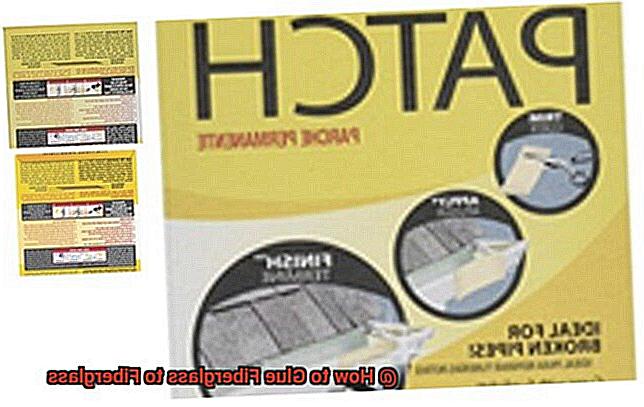
For those looking for an even stronger bond, welding may be an option. Using a heat gun, you can melt the fibers of the fiberglass and fuse them together.
This creates a bond that is as strong as the original material itself. However, this method requires some experience and expertise to execute properly.
Overall, while glue may be the most commonly used method for bonding fiberglass, these alternative methods can provide equally strong and durable bonds.
Common Mistakes to Avoid When Gluing Fiberglass
Gluing fiberglass can be tricky, but if you take the time to do it right, you can ensure a strong and long-lasting bond.
Here are some of the most common mistakes to avoid when gluing fiberglass:
- First, make sure that the surfaces are clean and free of dust, oil, or debris.
- If these items are present, the glue may not adhere properly and could lead to a weakened joint.
- Epoxy is one of the best types of glue for fiberglass materials due to its waterproof and heat-resistant properties.
- Be sure to mix it according to package instructions and apply just enough for a thin, even layer – too much or too little will weaken the bond’s strength.
- Finally, let the glue dry completely before applying pressure on the joint.
This will guarantee that the bond is solid and won’t be weakened or broken.
Troubleshooting Tips for Unsuccessful Bondings
Gluing fiberglass to fiberglass is a delicate and precise job, but even the most careful bonding process can go wrong and result in weak or no adhesion. If you find yourself in such a situation, don’t panic – instead, use these troubleshooting tips to identify the cause of the issue and get your project back on track.
Surface preparation is essential for successful bonding.
- Fiberglass surfaces must be clean and free from any dirt, oil, or contaminants that could prevent adhesion. If the surface has not been properly cleaned and prepped, then it won’t be strong enough to hold the two pieces of fiberglass together.
- The next step is choosing the right adhesive. Different types of adhesives are suited for specific applications, so make sure you select one that is compatible with fiberglass materials. Epoxy glue is one of the best adhesives for fiberglass bonding because it is strong, durable, and able to form a waterproof seal. Gorilla glue can also be used for fiberglass bonding but requires a higher level of surface preparation before use.
- Once you have chosen your adhesive, make sure you apply just enough to produce a thin but thick layer on one of the surfaces. Applying too much or too little adhesive can lead to failed bonding. Remember that too much will make it harder for the two pieces of fiberglass to bond while too little will result in insufficient bonding strength.
- Finally, pay attention to curing time. Different types of adhesives have different curing times depending on temperature and humidity levels; epoxy usually takes several hours if not overnight before it’s fully cured.
Premature applications of forces or loads on bonding can significantly affect its overall strength as well, so make sure not to loosen the surfaces until the glue has completely hardened.
Also Read: How to Glue Fiberglass to Fiberglass? – Glue Things
Conclusion
Gluing fiberglass to fiberglass is a precise process that requires careful planning and the right type of adhesive.
We’ve discussed all the steps involved, from prepping the surfaces to selecting the best glue. Epoxy glue is usually chosen for bonding fiberglass because it produces an incredibly strong bond that’s waterproof and heat-resistant.
However, other options such as contact cement or welding can also create strong bonds. It’s essential to understand why gluing two pieces of fiberglass together is so important – it creates a secure connection that will last through time and wear-and-tear when done properly.
To ensure your project is successful, make sure to clean the surfaces before gluing; use only enough glue for a thin but thick layer; and pay attention to curing times.


